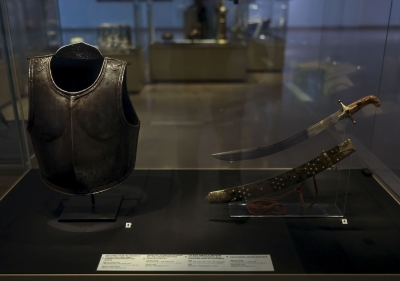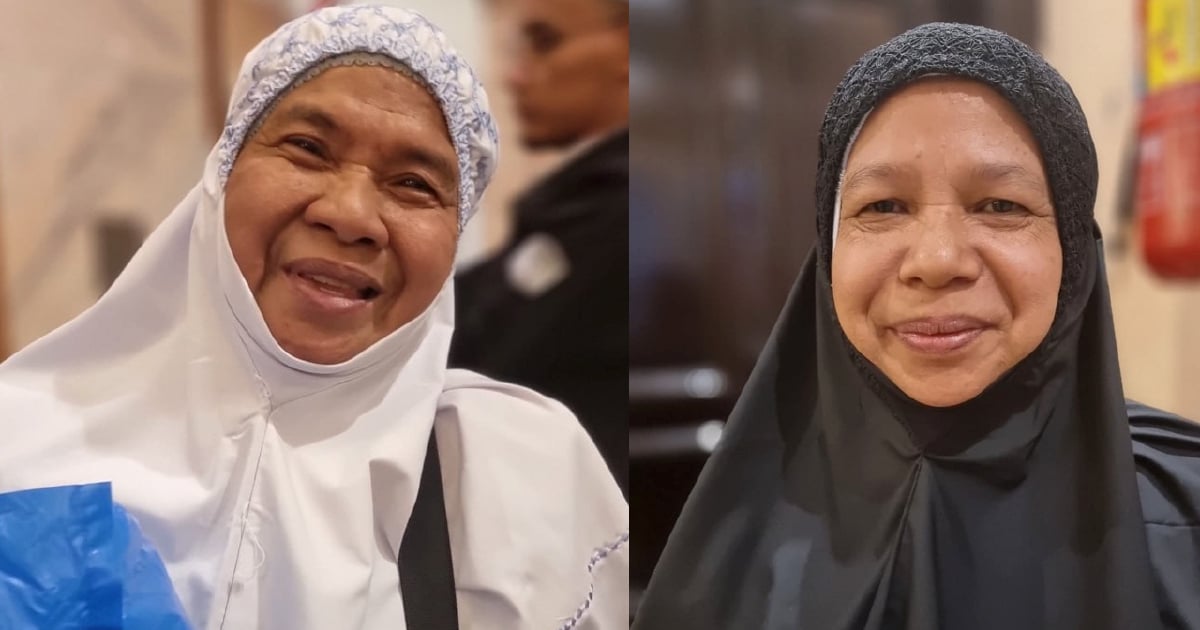KUALA LUMPUR, Dec 14 — The public can delve into Islamic art and culture, encompassing a history and cultural journey of over 1,000 years from East Asia to West Africa, through two exhibitions held in conjunction with the Islamic Arts Museum Malaysia (IAMM) silver anniversary celebration.
The exhibitions, “A Journey Through Islamic Art” and “Alif Lam Ra: Contemporary Muslim Calligraphy”, taking place at IAMM until June next year, showcase a variety of historical artefacts and Islamic art for visitors to appreciate.
IAMM curator Hariz Ahmad Kamal said that each artefact displayed in the “A Journey Through Islamic Art” exhibition is part of the museum’s collection gathered over the years and produced from various materials.
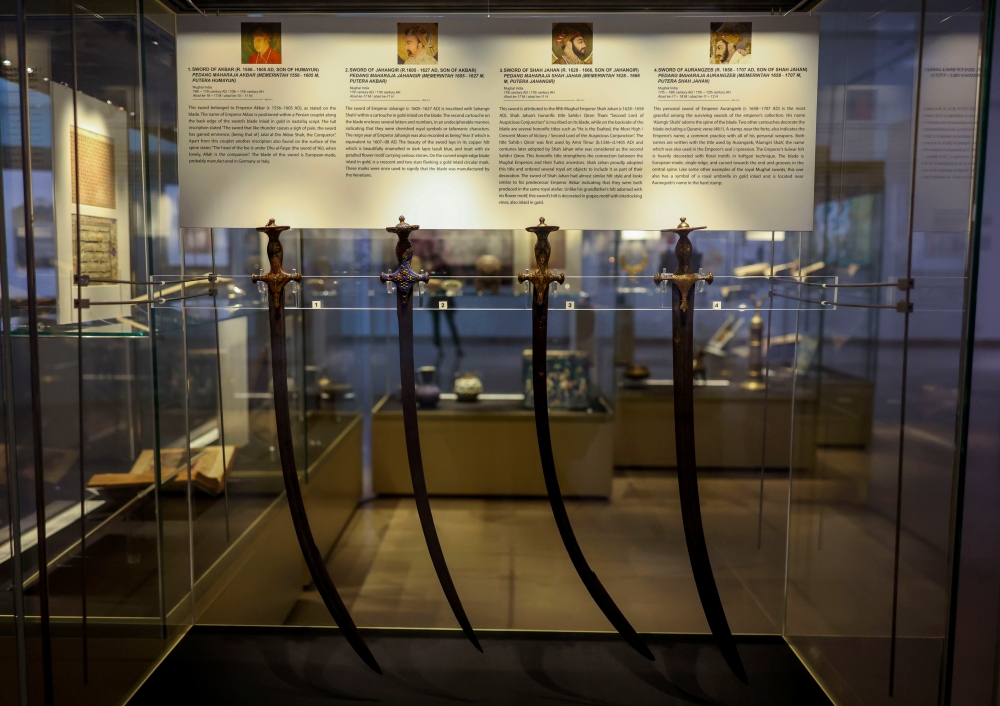
Four royal swords from the Mughal Empire in India, dating from the 15th to the early 18th century, belonging respectively to Emperor Akbar, who reigned from 1556 to 1605, Emperor Jahangir (1605-1627), Emperor Shah Jahan (1628-1666), and Emperor Aurangzeb (1658-1707), are displayed in the exhibition. — Bernama pic
Advertisement
“The exhibition showcases the diversity of aesthetic elements in Islamic art. This is because each artefact has its own story,” he told Bernama.
Four royal swords from the Mughal Empire in India, dating from the 15th to the early 18th century, belonging respectively to Emperor Akbar, who reigned from 1556 to 1605, Emperor Jahangir (1605-1627), Emperor Shah Jahan (1628-1666), and Emperor Aurangzeb (1658-1707), are displayed in the exhibition.
Also on display is the golden finial that once adorned the throne of Tipu Sultan, famously known as the Tiger of Mysore, from the Mysore Sultanate in Seringapatam, South India, during the 18th century. It is believed to have been seized by the British forces after Tipu Sultan’s defeat to the East India Company in the Anglo-Mysore War.
Advertisement
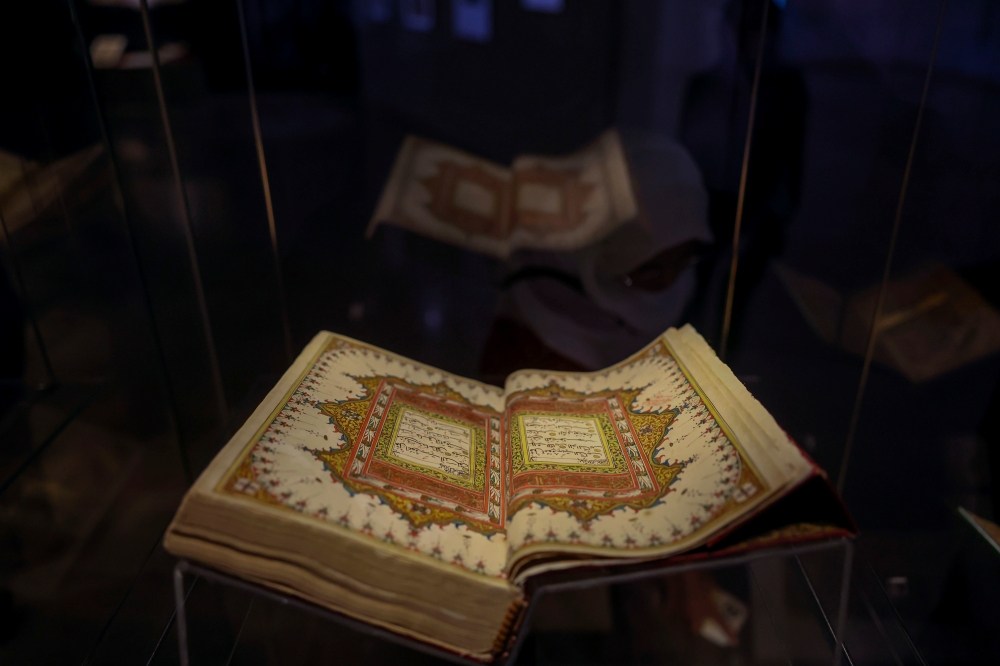
Among the old manuscripts of the Quran that were also exhibited in the Tracing Islamic Art Exhibition room at the Malaysian Islamic Art Museum. — Bernama pic
Among the initial collections of IAMM showcased is a set of 30 volumes of the Hui Quran from the Qing Dynasty in the 17th century. They are adorned with Chinese motifs such as cloud patterns or peony flower buds and are written with only three to five lines on each page for each juz (part).
Additionally, a 10-metre-long red carpet with palm motifs, crafted using sheep’s wool and silk during the Safavid era in the mid-17th century, is expected to captivate visitors’ attention as one of the finest carpets from the Persian heyday.
Meanwhile, the “Alif Lam Ra: Contemporary Muslim Calligraphy” exhibition showcases the evolution of calligraphy as the highest form of expression in Islam.
The exhibition features the works of 42 contemporary Islamic calligraphers from various countries, including notable calligraphers such as Fuad Kouichi Honda from Japan, Azra Aghighi (Iran), Charles Hossein Zenderoudi (Iran), Ahmad Moustafa (Mesir), Nasser Al-Aswadi (Yaman), Nja Mahdoui (Tunisia) dan Khaled Al Saai (Syria).
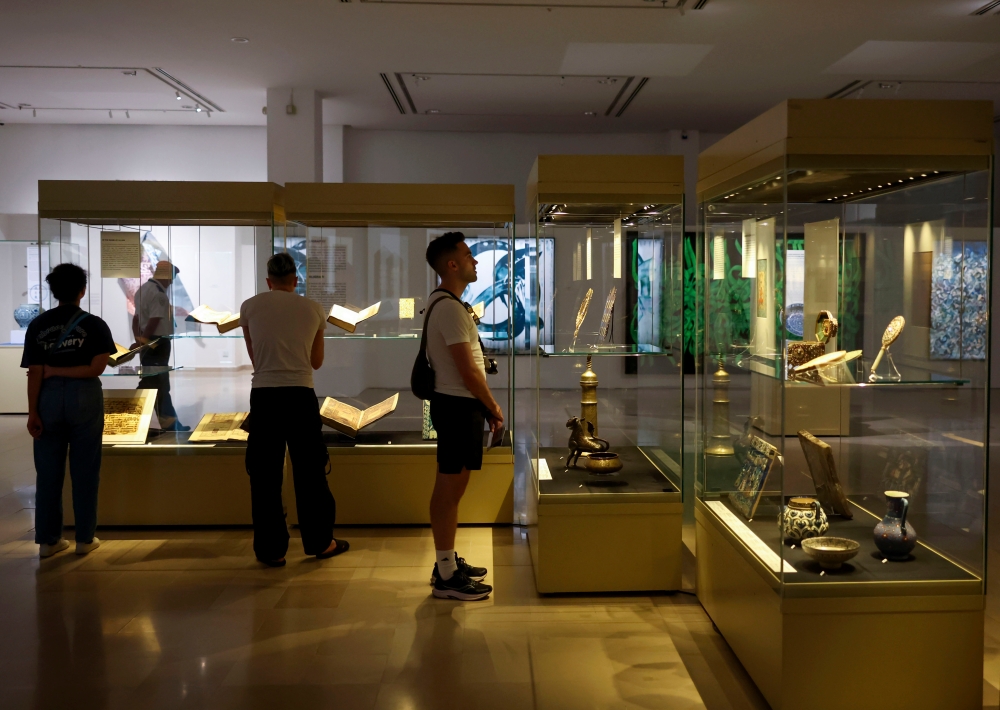
The public has the opportunity to explore Islamic art and culture covering history and culture spanning over 1,000 years covering areas from East Asia to West Africa through two exhibitions held in conjunction with the Silver Jubilee celebration of the Malaysian Islamic Art Museum. — Bernama pic
Hariz added that both exhibitions highlight IAMM’s role as a preserver, conservator and educator in driving the direction of Islamic art and culture branches in Malaysia since its opening on December 12, 1998. Overall, IAMM has over 13,000 collections of Islamic art artefacts, but only 2,500 are on display in its 12 permanent galleries during its 25-year existence.
A student from a local college, Gan Joe Ren, 18, said the exhibitions allowed him to witness the grandeur of Islam worldwide.
“I’m fond of Islamic art. It’s not messy but rather highly organised, almost like geometry. Through this art, I can observe the history and cultural aspects of the community’s way of life,” he said.
As for Ong Wei En, 18, she admires Islamic art and hopes to explore it more in the future.
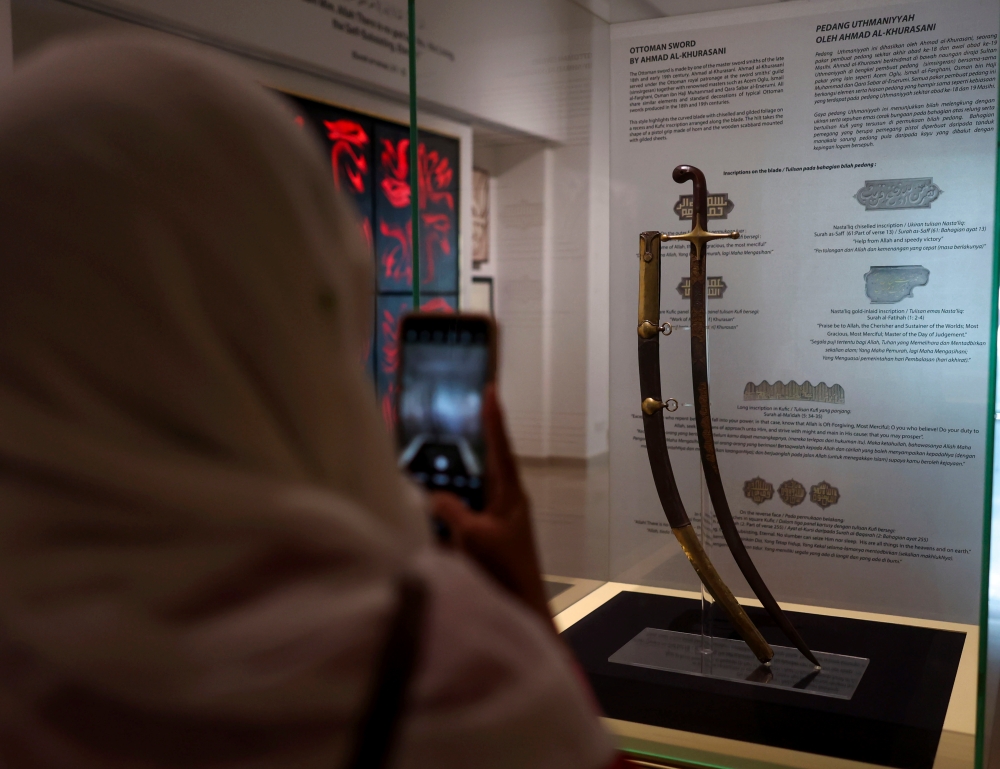
A visitor takes a picture of an Ottoman sword. — Bernama pic
“I find the culture very fascinating, and I like how symmetric and satisfying everything is. I like how they put Arabic words and the Quran into art, and I find it very interesting… I would like to explore more about it,” she said.
Both exhibitions, featuring nearly 150 historical artefacts from the eighth century to modern calligraphic paintings, were officiated by Prime Minister Datuk Seri Anwar Ibrahim last Tuesday.
More information on both exhibitions is available on IAMM’s Instagram pages @Islamicartsmuseummalaysia and @Islamicartsmuseumeevents. — Bernama


